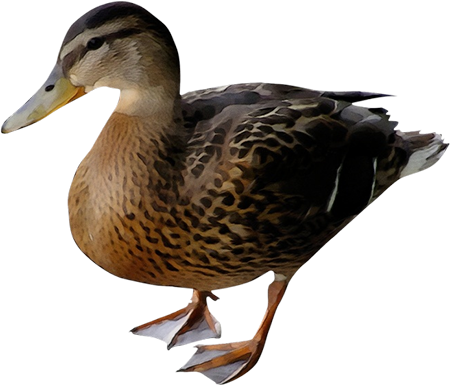
Investigating the Effects of Oil Spills on Birds
Background:
The impacts of environmental pollution are often difficult to see. A major oil spill, however, provides dramatic evidence of potential impact to wildlife. All forms of life are affected by such a disaster. Many people are involved in efforts to prevent oil spills and their consequences as well as help clean up efforts should an accident occur. Such actions are not always successful and sometimes have unfortunate consequences. The purpose of this activity is to examine some of the possible consequences of oil spills on birds.
Materials:
- Natural bird feathers (can be purchased from Amazon )
- Dissecting microscope or hand lens
- Vegetable oil
- Water
- Styrofoam bowl
- Dawn soap
Procedure
Follow the steps below and answer the questions where applicable. Place a check mark in the box after each step is completed. Some of the questions you may need to use your textbook or other references. Answer each question as thoroughly as you can.
1. Examine a feather with a magnifying glass or a dissecting microscope. Sketch the feather below, label the shaft, vane and barbs.
2. Use your fingers to rub the feather against the vanes. This should mess the feather up. Now gently stroke your fingers of the feather with the vanes. This should cause the vanes to hook up together and the feather to return to its original shape. What are the hooks that link the barbs together called?
How Does a Feather React to Water?
3. Fill a container with water and submerge the feather for 5 seconds. Remove the feather and shake it gently. Compare the feather wet to the way it looks dry.
4. Lay the feather on a paper towel and record the amount of time it takes for it to completely dry.
5. What is preening? Why is it necessary for birds to have a natural coat of oil on their feathers?
How Does a Feather React to Oil?
6. Now simulate an oil spill by dipping the feather in oil. Remove the feather and record your observations below (what does it look like). Do you think this bird could fly?
7. Birds caught in oil spills are washing with liquid Dawn to remove the oil. Wash the feather with one or two drops of dawn and rinse well. Record your observations below.
8. Lay the feather on a paper towel and wait for it to dry completely. Record the time it takes for it to dry now.
9. Why does the feather remain wet longer after it has been washed with soap?
10. Do you think a bird after being washed with Dawn will have trouble flying or swimming?
11. What should you do to ensure a bird's survival that has been washed with Dawn?
12. How do you think oil would affect the fur of mammals?
What is the Effect of an Oil Spill on the Egg?
13. Sketch the amniote egg. Label the chorion. What is the function of the chorion.
14. Make a prediction about whether an egg is permeable to oil. Remember, predictions should be in the form of "IF...THEN" statements.
15. Obtain a hardboiled egg soaked in oil. Carefully peel the egg. Record your observations below.
16. Was the shell permeable to oil? How do you know?
17. What do you think would happen to the embryo in an egg that has been soaked in oil.
How Does Oil React to Soap?
18. Fill a styrofoam bowl full of water. Using a pipette, drop three or four drops of oil on the surface of the water. Record your observations.
19. Use a pipette to drop a few drops of detergent over the oil. What happens?
20. Why do commercials claim that "Dawn Breaks up Grease"? Is this a valid claim?
Clean-up: Wash your styrofoam bowl and with soap and water and make sure it is rinsed well. Throw away the feathers and the egg parts.
Related Resources
Case Study – Loggerhead Turtles and Population Models – explore the number of eggs hatched and survivorship
Ecology Case Study – The Wolves of Isle Royale – population decline and reintroduction of wolves
Investigating Algae Blooms and Dinoflagellates – discover how rainfall and temperature affect aquatic ecosystems

